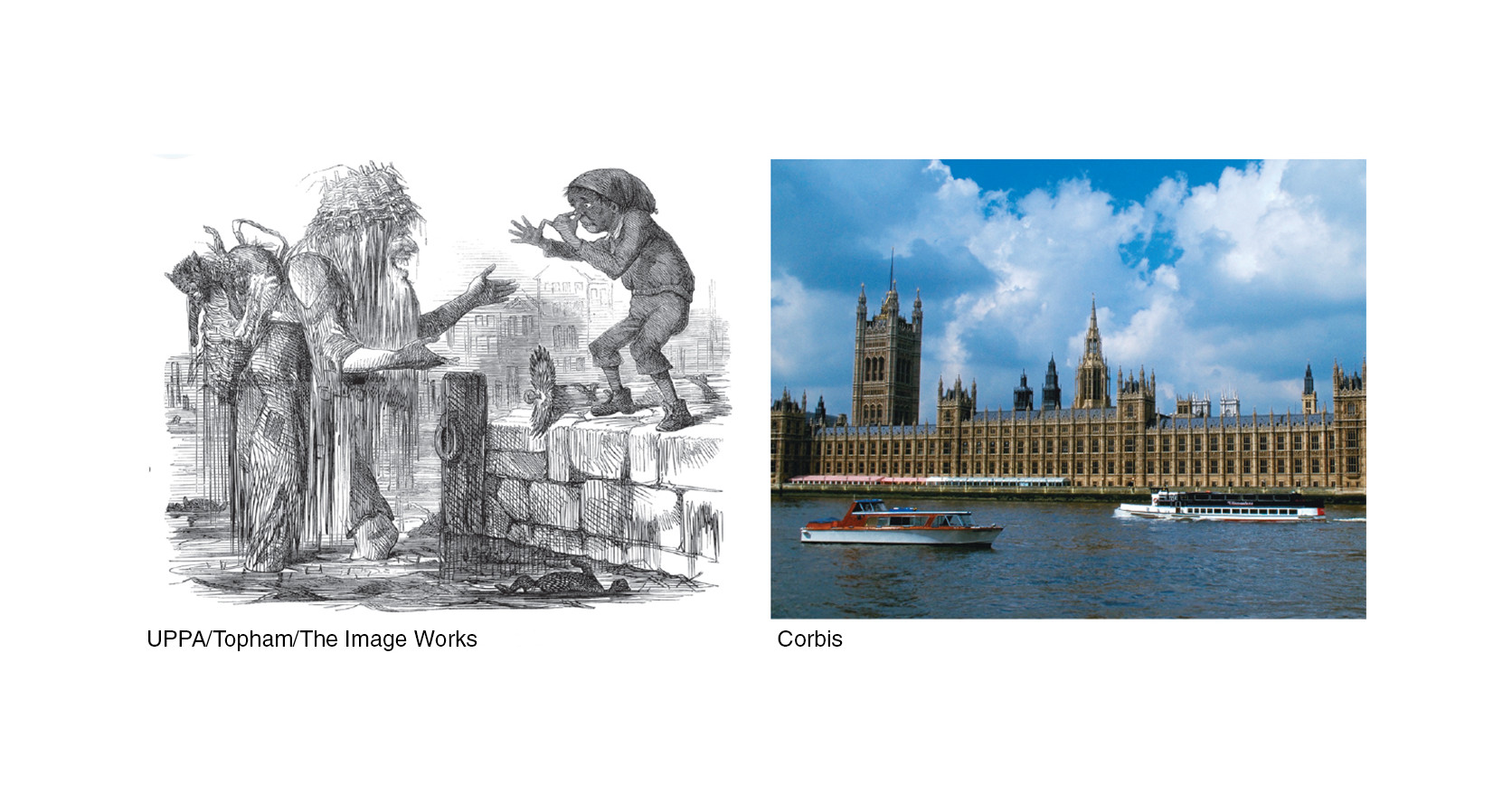Chapter Introduction
Externalities and Public Goods
CHAPTER 10
![]() THE GREAT STINK
THE GREAT STINK

What You Will Learn in This Chapter
What externalities are and why they can lead to inefficiency and government intervention in the market
The importance of the Coase theorem, which explains how private individuals can sometimes remedy externalities
Why some government policies to deal with externalities, like emissions taxes, tradable emissions permits, or Pigouvian subsidies, are efficient and others, like environmental standards, are not
The difference between private goods, which can be efficiently provided by markets, and public goods, which markets fail to supply
 | interactive activity
| interactive activity
BY THE MIDDLE OF THE NINEteenth century, London had become the world’s largest city, with close to 2.5 million inhabitants. Unfortunately, all those people produced a lot of waste—
The hot summer of 1858 brought what came to be known as the Great Stink, which was so bad that one health journal reported “men struck down with the stench.” Even the privileged and powerful suffered: Parliament met in a building next to the river and unsuccesfully attempted to stop the smell by covering the windows with chemical-
By dumping waste into the Thames, individuals imposed costs on all of the residents of London. When individuals impose costs on or provide benefits for others, but don’t have an economic incentive to take those costs or benefits into account, economists say that externalities are generated.
In this chapter, we’ll examine the economics of externalities, seeing how they can get in the way of economic efficiency and lead to market failure, why they provide a reason for government intervention in markets, and how economic analysis can be used to guide government policy.
The story of the Great Stink also illustrates an important reason for government intervention in the economy. London’s new sewage system was a clear example of a public good—